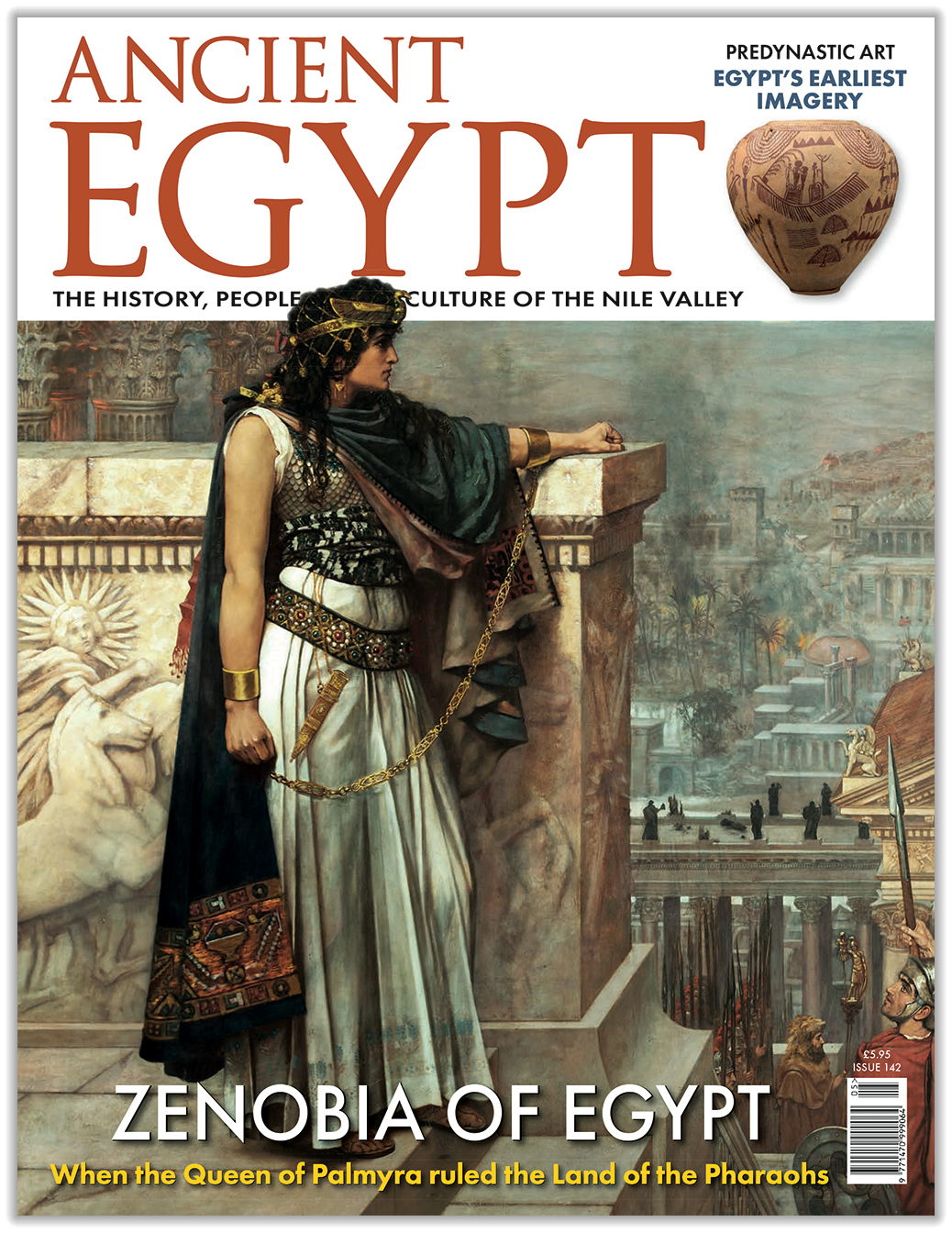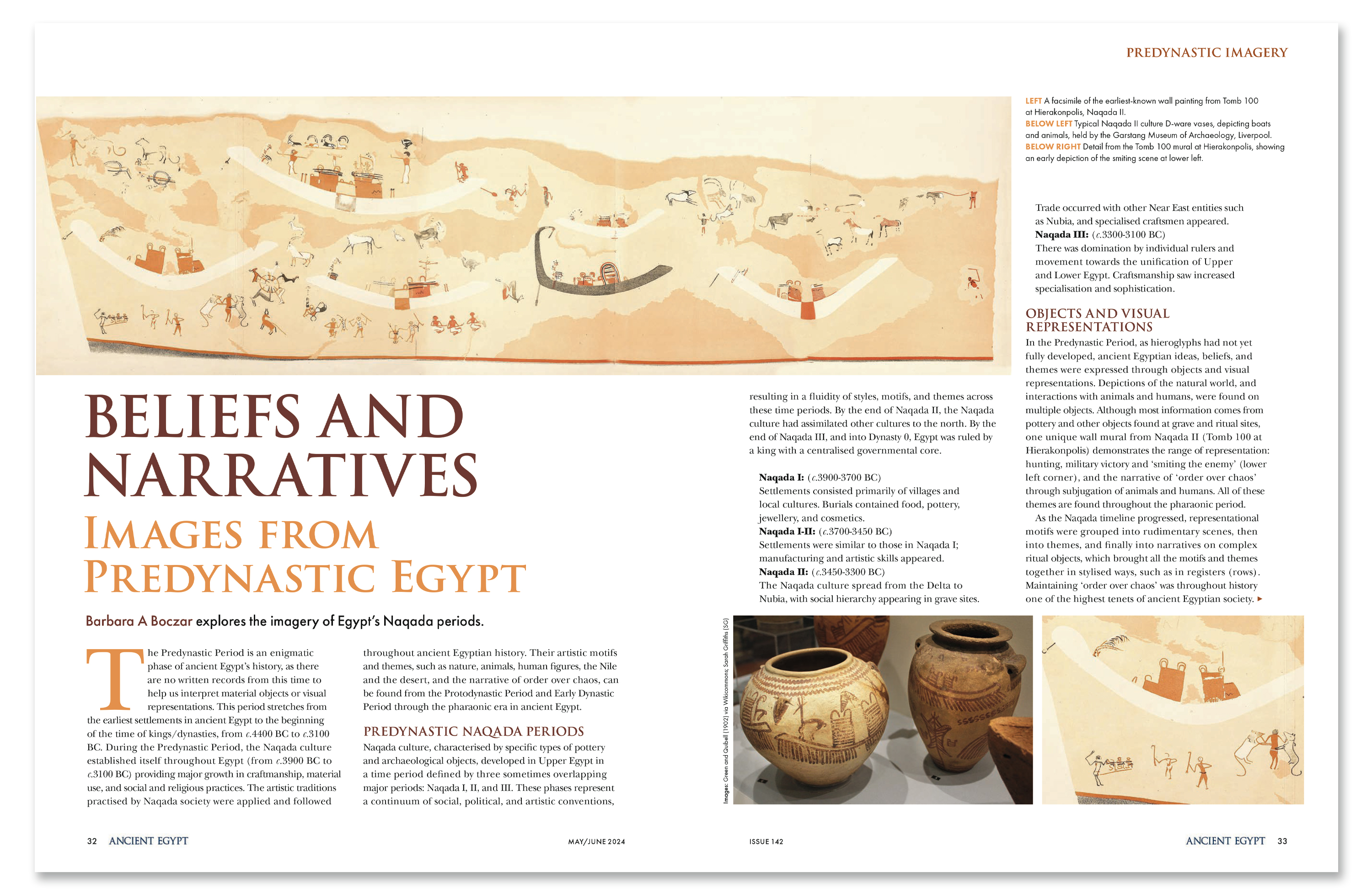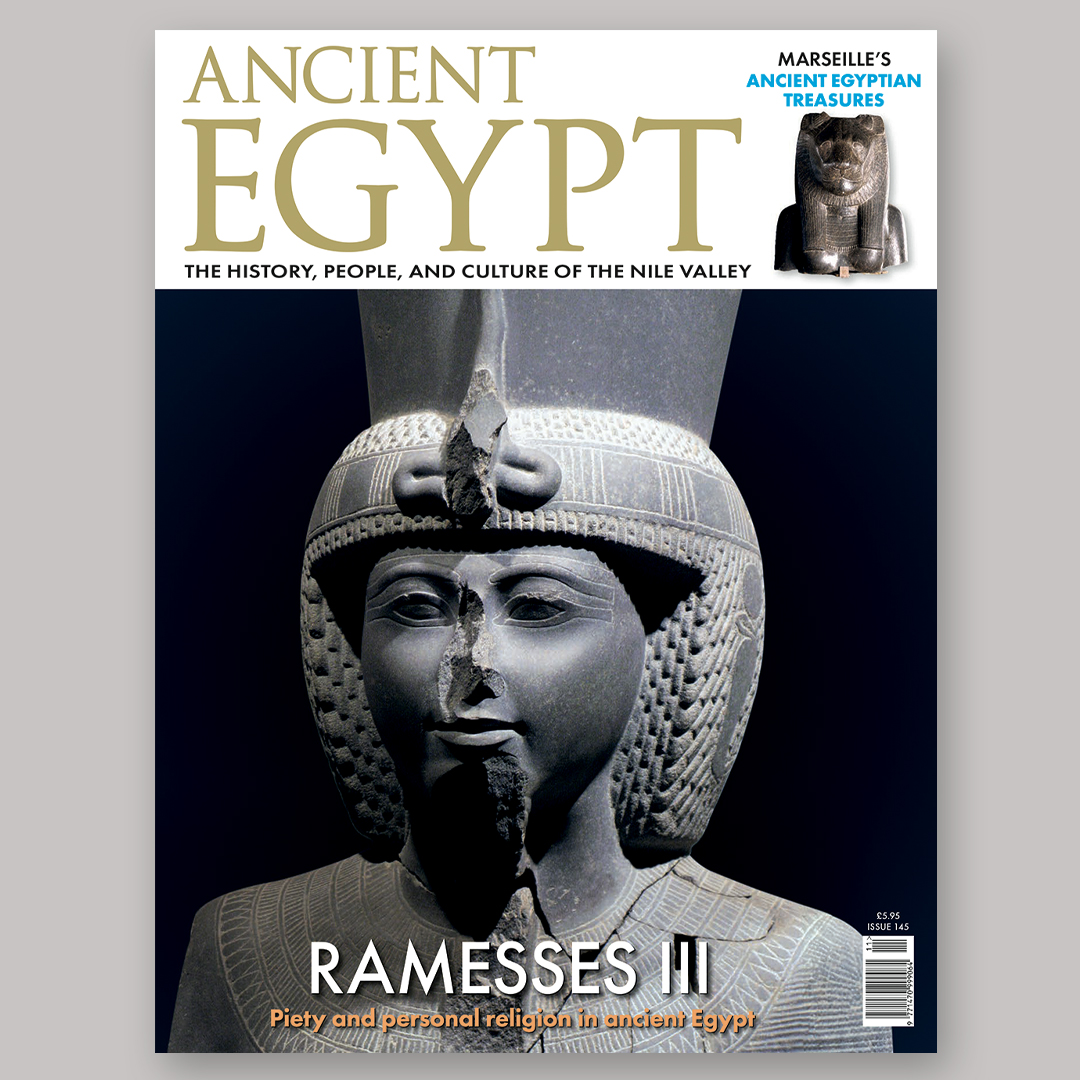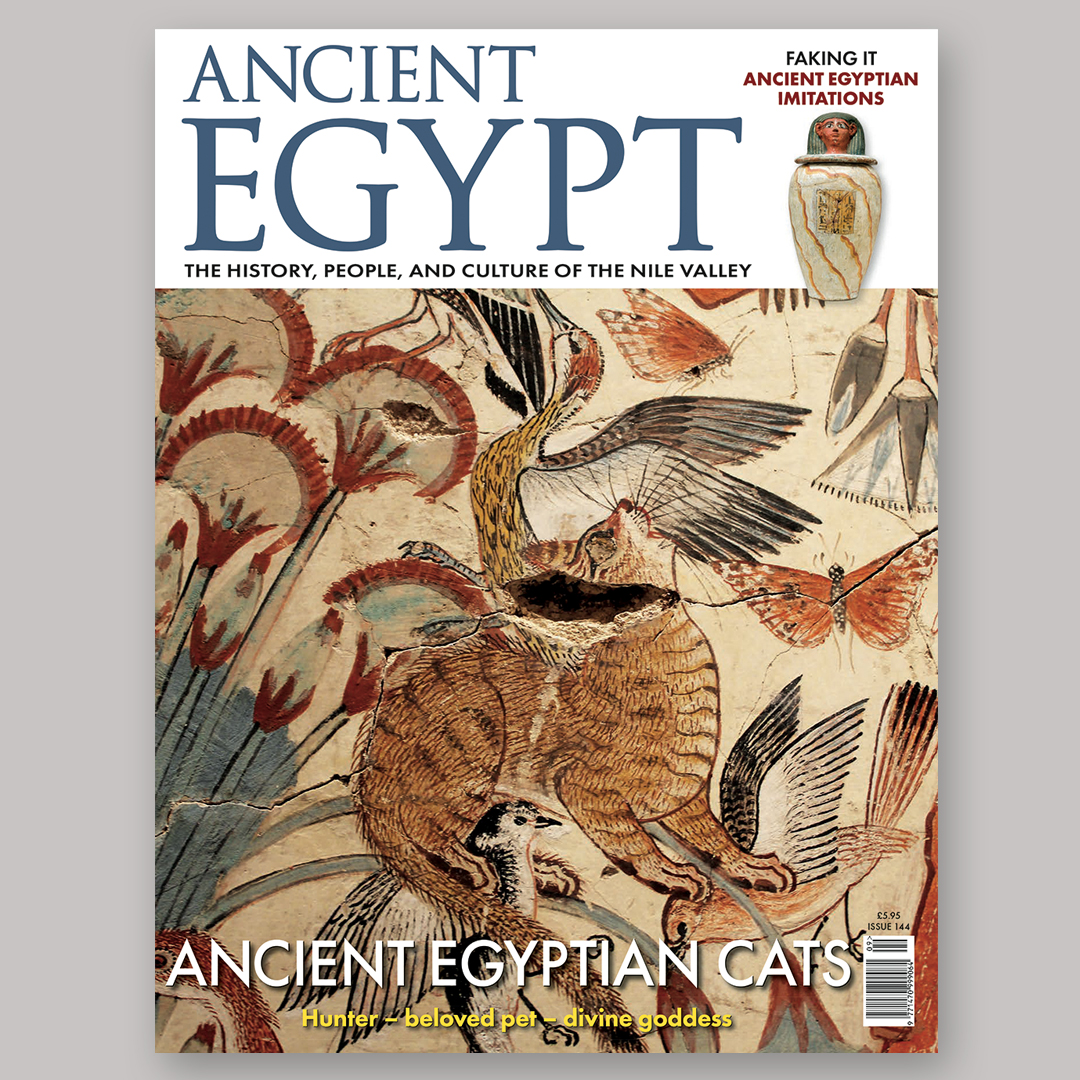AE 142 - May / Jun 2024


At several periods during its long history, ancient Egypt was conquered and ruled by foreign powers. The exploits and achievements of some of these, such as the Kushites and Romans, are well known, but, as our cover shows, Egypt was also once ruled over by Zenobia – Queen of Palmyra. Andrew Fulton tells us about the little-known annexation of Egypt by the Palmyrene Empire in AD 270.

Some 600 years before Zenobia, Egypt was invaded by Alexander the Great. One of his generals became the rst ruler of the Ptolemaic Dynasty – a family that included some powerful ruling women. In the nal article in his series, Lloyd Llewellyn-Jones looks at the last of the Cleopatras to rule before Egypt became a Roman province.
The pyramids of Giza were already ancient monuments when the Romans conquered Egypt. Over the centuries there have been countless theories as to their purpose and about the way in which they were constructed. But it is not simply the extraordinary size of the monuments that has evoked such feelings of awe. When they were surveyed by Western Egyptologists, the accuracy of their alignment to the cardinal points of the compass, and the vast knowledge that the ancient Egyptians had of the movements of celestial bodies became clear. The application of sophisticated scientific techniques by a team from the University of Jaén at Aswan’s Qubbet el-Hawa tombs shows that there are many aspects of the ancient Egyptian civilisation that can still astonish us, and ll us with admiration for the skill of the ancient craftsmen.

We go back to Predynastic Egypt in this issue, too, as Barbara Boczar explores the earliest ancient Egyptian imagery, while Hilary Wilson introduces us to some of the more unexpected uses for milk, Joseph L Thimes discusses the possible translations of the Egyptian name given to the Biblical Joseph, and Roger Forshaw reveals the ‘Tanis Treasures’, which were only eclipsed by the discovery of Tutankhamun’s tomb.




